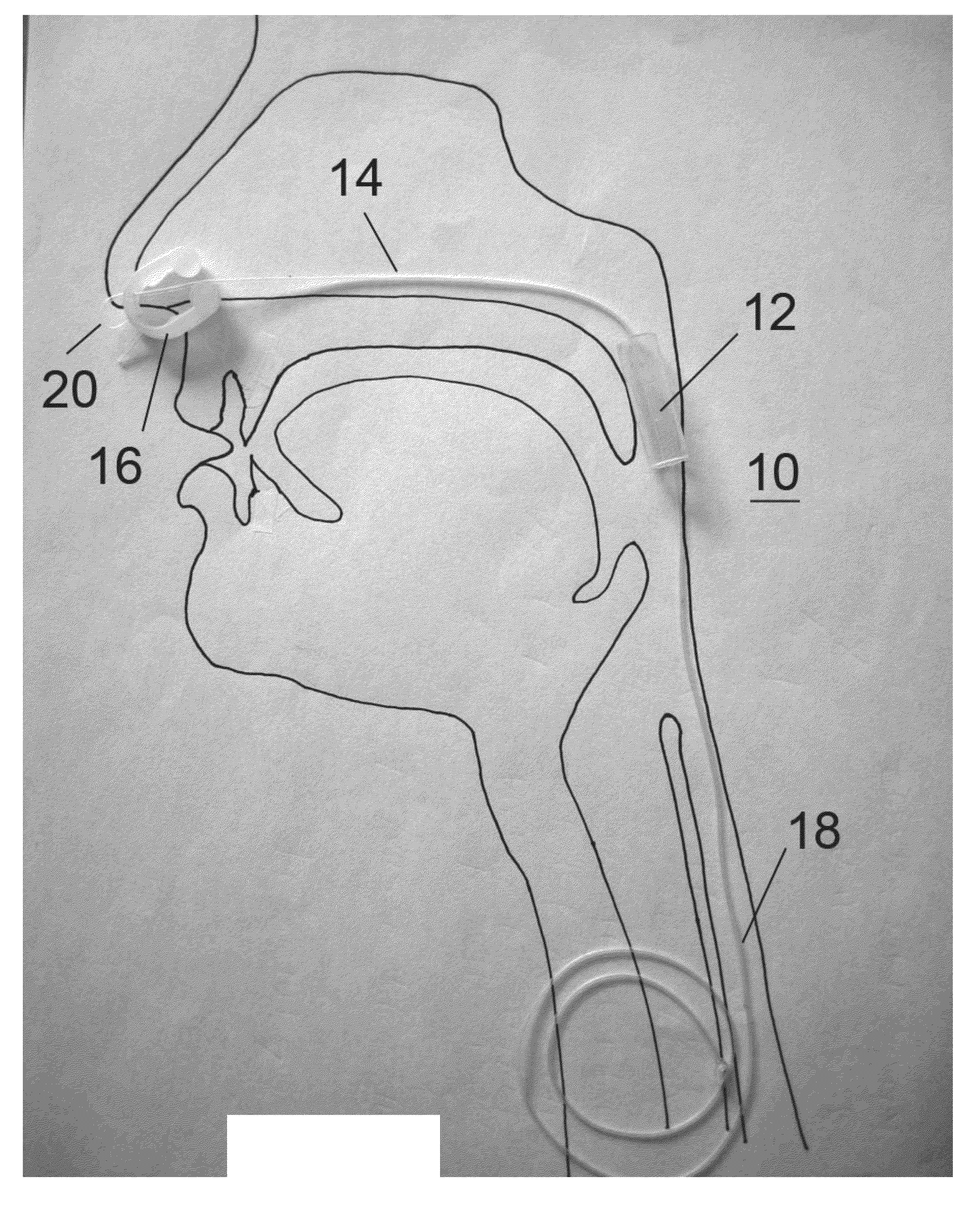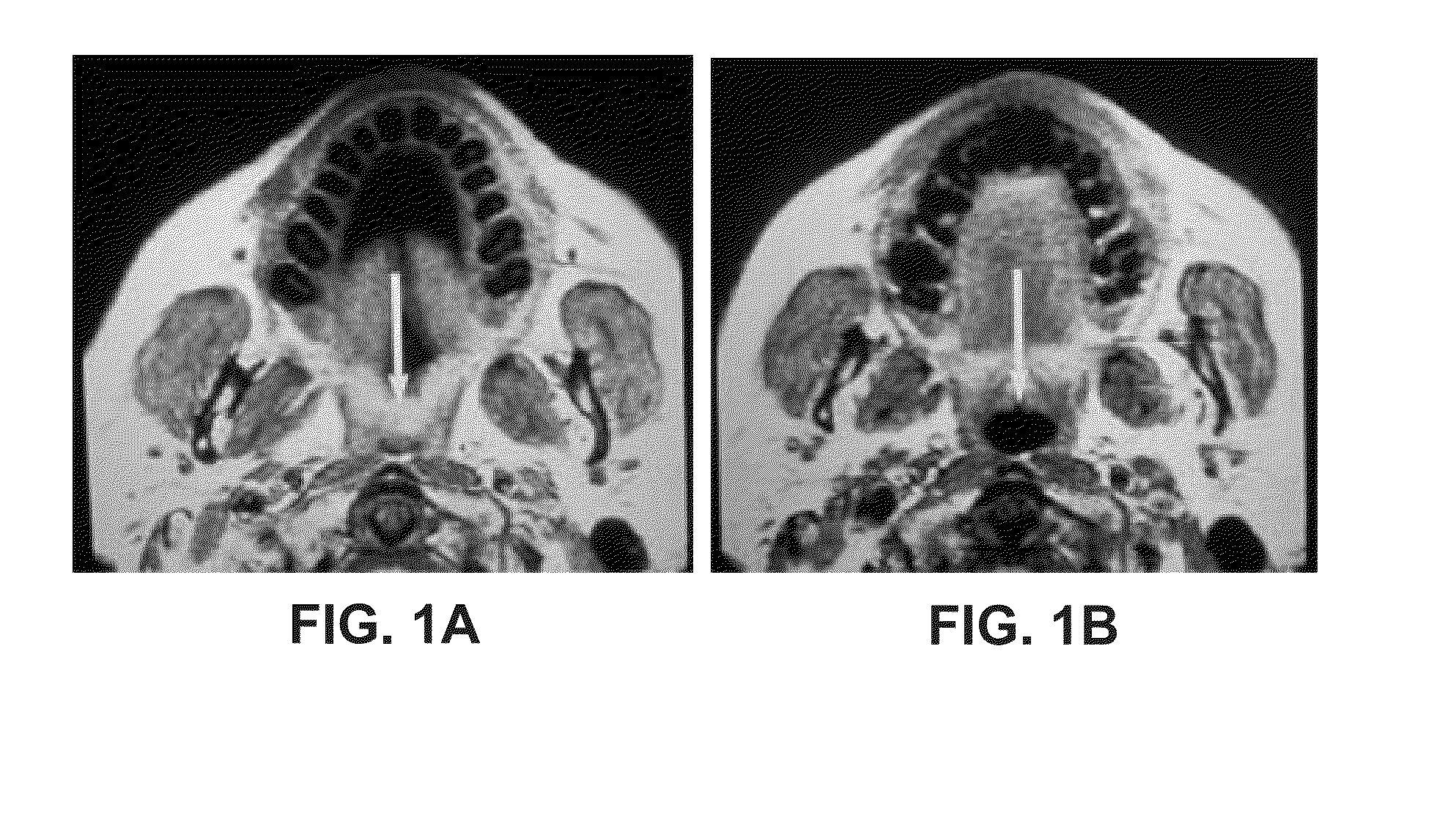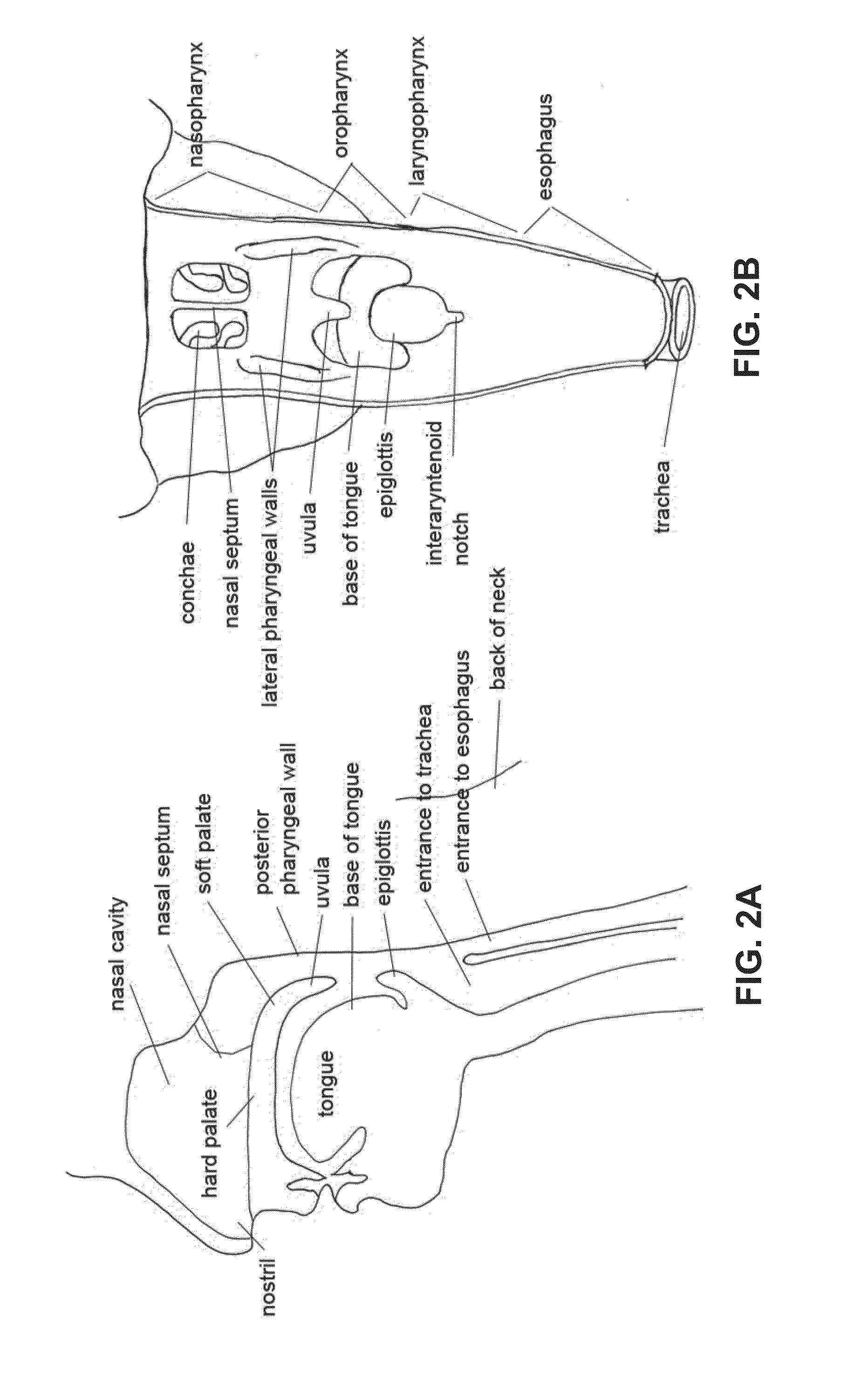Devices and methods for treating sleep disordered breathing
a technology for breathing disorder and breathing apparatus, applied in the field of devices and methods for treating sleep disordered breathing, can solve the problems of affecting the quality of life of patients, so as to minimize the resistance to airflow
- Summary
- Abstract
- Description
- Claims
- Application Information
AI Technical Summary
Benefits of technology
Problems solved by technology
Method used
Image
Examples
example 1
Visualization of a Tethered Airway Device in a Subject
[0134]The device illustrated in FIG. 6 (without sinker element 18) was constructed and delivered in accordance with the teachings of the present invention and positioned with a nasopharyngeal cavity of a male test subject. Device body 12 was made from a tube 2 cm long, 8 mm in diameter and 0.6 mm thick molded from silicone of shore A 5 and adhered to tether 14. Device body 12 was observed using in-vitro bench testing to crush closed when a 30 gram weight was placed on it with the weight uniformly distributed along the length of device body 12. 30 grams of crush force on the tube of device body 12 corresponds to a pressure of 20 cm of water, which is more than the universally effective CPAP pressure of 10 to 15 cm of water. Therefore device body 12 is stiff enough to prevent airway collapse.
[0135]Tether 14 was fabricated from a 1 mm OD silicone tube made from shore A 60 silicone. Attachment of tether 14 to device body 12 was via W...
example 2
Use of a Tethered Airway Device in a Patient
[0138]The device illustrated in FIG. 6 was constructed and delivered in accordance with the teachings of the present invention and positioned with a nasopharyngeal cavity of a male test subject suffering from snoring and sleep apnea. Device body 12 was made from a tube 2 cm long, 8 mm in diameter and 0.6 mm thick molded from silicone of shore A 5 and adhered to tether 14. Tether 14 was fabricated from a 1 mm OD silicone tube made from shore A 60 silicone. Attachment of tether 14 to device body 12 was via a Wacker E41 silicone adhesive. At the distal end of sinker element 18 which measured 50 cm in length, a 4 mm ball of silicone was formed using the silicone adhesive. The 4 mm ball provided an object against which peristaltic forces worked to cause sinker element 18 to be swallowed and present in the stomach of the subject, thereby aligning device body 12 in the pharynx. Tether 14 was attached to anchor 16 (an external nose clip fabricated...
PUM
 Login to View More
Login to View More Abstract
Description
Claims
Application Information
 Login to View More
Login to View More - Generate Ideas
- Intellectual Property
- Life Sciences
- Materials
- Tech Scout
- Unparalleled Data Quality
- Higher Quality Content
- 60% Fewer Hallucinations
Browse by: Latest US Patents, China's latest patents, Technical Efficacy Thesaurus, Application Domain, Technology Topic, Popular Technical Reports.
© 2025 PatSnap. All rights reserved.Legal|Privacy policy|Modern Slavery Act Transparency Statement|Sitemap|About US| Contact US: help@patsnap.com



